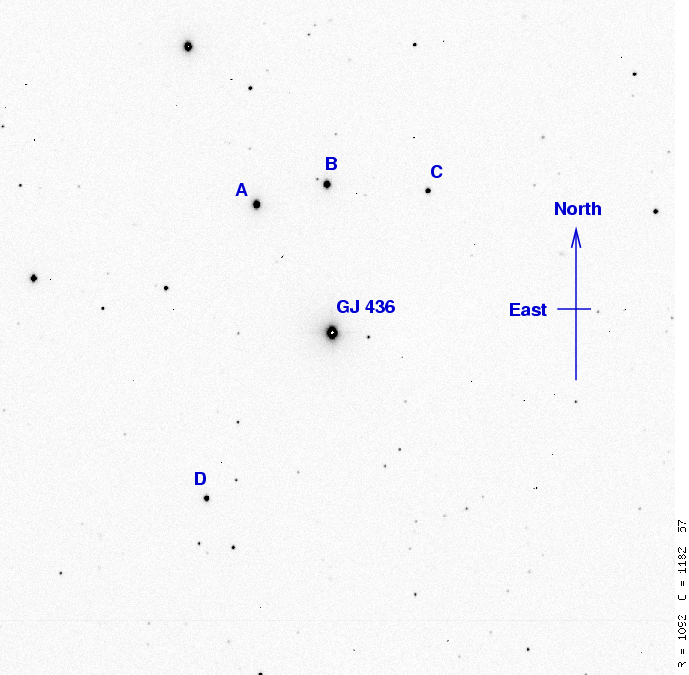
On the night of UT Dec 31, 2007, the SDSS Photometric Telescope ("PT" for short) took a series of exposures of GJ 436. We did not detect a transit by the planet in this system, which is really too small for us to detect cleanly; however, there was a much larger change in brightness, I suspect due to saturation.
Notes from the night
This is a chart of the field. GJ-436 is the bright star indicated by the crosshairs. The labelled stars will appear in later analysis.

The host star of GJ-436 has a magnitude V=10.67 according to A Neptune‐Mass Planet Orbiting the Nearby M Dwarf GJ 4361. I think the 35-second i-band exposures might be a bit too long for this star, since the central pixels have very high values. I wonder if saturation might be responsible for the small drift in its brightness that you will see below ....
Following the procedures outlined by Kent Honeycutt's article on inhomogeneous ensemble photometry, I used all stars available in each image to define a reference frame, and measured each star against this frame. You can find the software package used to do the ensemble photometry online; it's free!
The night was clear. The graph below shows the amount by which instrumental magnitudes from each image needed to be shifted to match the ensemble reference. On a clear night, this graph would show a straight horizontal line.
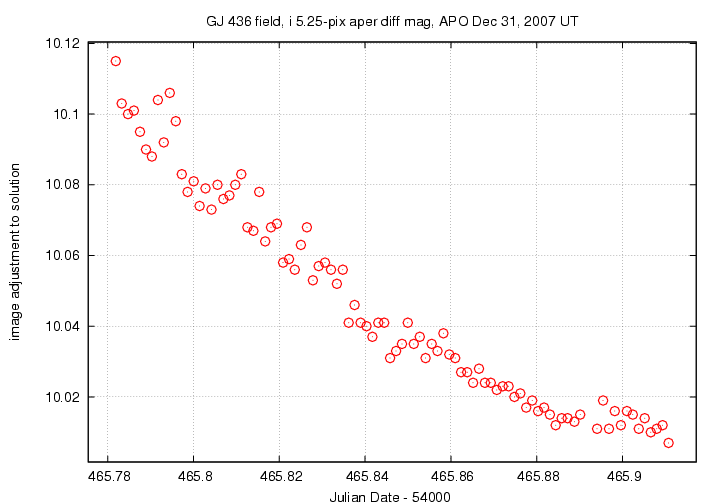
Below is a graph of the scatter in differential magnitude versus magnitude in the ensemble solution.
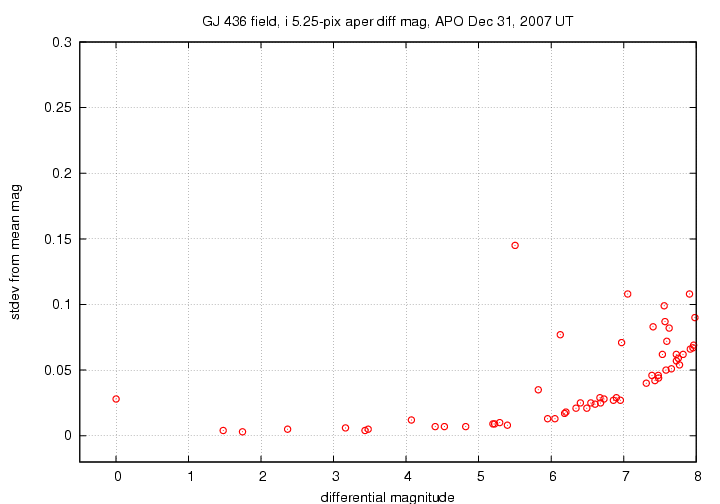
GJ-436 is the star at differential mag 0.0; it shows a large excess of scatter over neighboring stars of the same brightness. The excess is TOO large: the amplitude of the dip due to transits in this system is only 0.006 mag. The "noise floor" in these measurements is about 0.003 mag -- as good as I've seen for APO transit work.
Below are the light curves for the target (green symbols) and four comparison stars in the field.
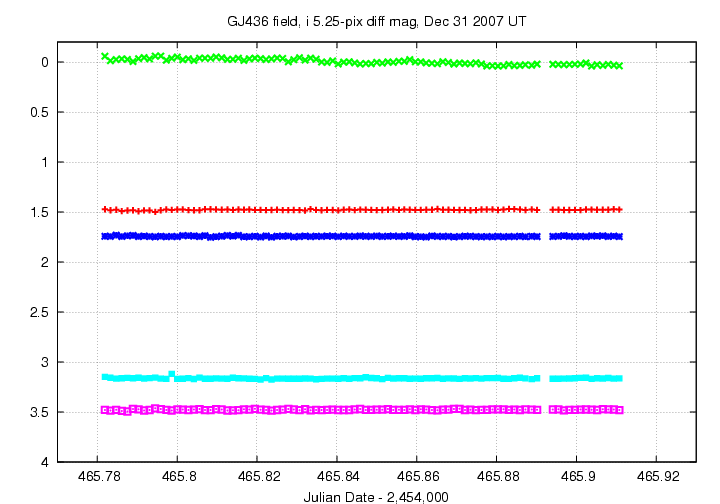
In this closeup, I have shifted the data for two comparison stars to move them closer in magnitude to the target.
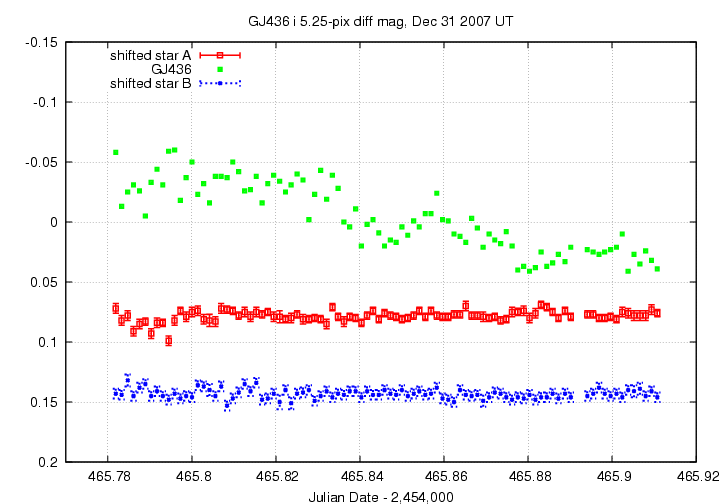
There is a long, gradual decrease in the brightness of the target star which continues to the end of the observations. I believe that this is an instrumental effect of some sort, perhaps caused by saturation. Let me explain.
An ephemeris grabbed from transitsearch.org predicts for this night
----------------------------------------------------------------------------------------
Begin Transit Window PREDICTED CENTRAL TRANSIT End Transit Window
All Times UT
HJD Year M D H M
2454465.82 2007 12 31 7 39 2454465.85 2007 12 31 8 24 2454465.88 2007 12 31 9 8
----------------------------------------------------------------------------------------
The ephemeris ingress of UT 2007 Dec 31 07:39:00 corresponds to JD 2,454,465.819. The ephemeris egress of UT 2007 Dec 31 09:08:00 corresponds to JD 2,454,465.881.
However, this ephemeris is not a good one. Recent observations
indicate that the transits in this system are about 0.04 days long, not the 0.06 days predicted in the ephemeris.In any case, all observed transits have a depth of less than 0.01 mag, which is far smaller than the observed decrease in brightness in the PT measurements. The fact that the PT measurements continue to drop for much longer than the real transit further indicates that the observed decrease is not related to the transit. The near match in start times is a coincidence.
You can grab the measurements for your own analysis. Below is a table with three flavors of time, plus the differential magnitude of the target and an estimate of the uncertainty in each measurement. I show the first few lines of the file to give you an idea of its format.
Again, these measurements do NOT show the transit due to the planet in this system.
# Measurements of GJ-436 made with APO PT, Dec 31, 2007 UT. # Each exposure 35 seconds long in SDSS i-band; # Tabulated times are midexposure (FITS header time - half exposure length) # and accurate only to +/- 1 second (??). # 'mag' is a differential magnitude based on ensemble photometry # using a circular aperture of radius 5.25 arcseconds. # # UT day JD-2,450,000 HJD-2,450,000 mag uncert Dec31.78190 4465.78190 4465.78406 -0.058 99.000 Dec31.78327 4465.78327 4465.78543 -0.013 99.000 Dec31.78474 4465.78474 4465.78690 -0.025 99.000 Dec31.78612 4465.78612 4465.78828 -0.031 99.000
Last modified 01/25/2008 by MWR.